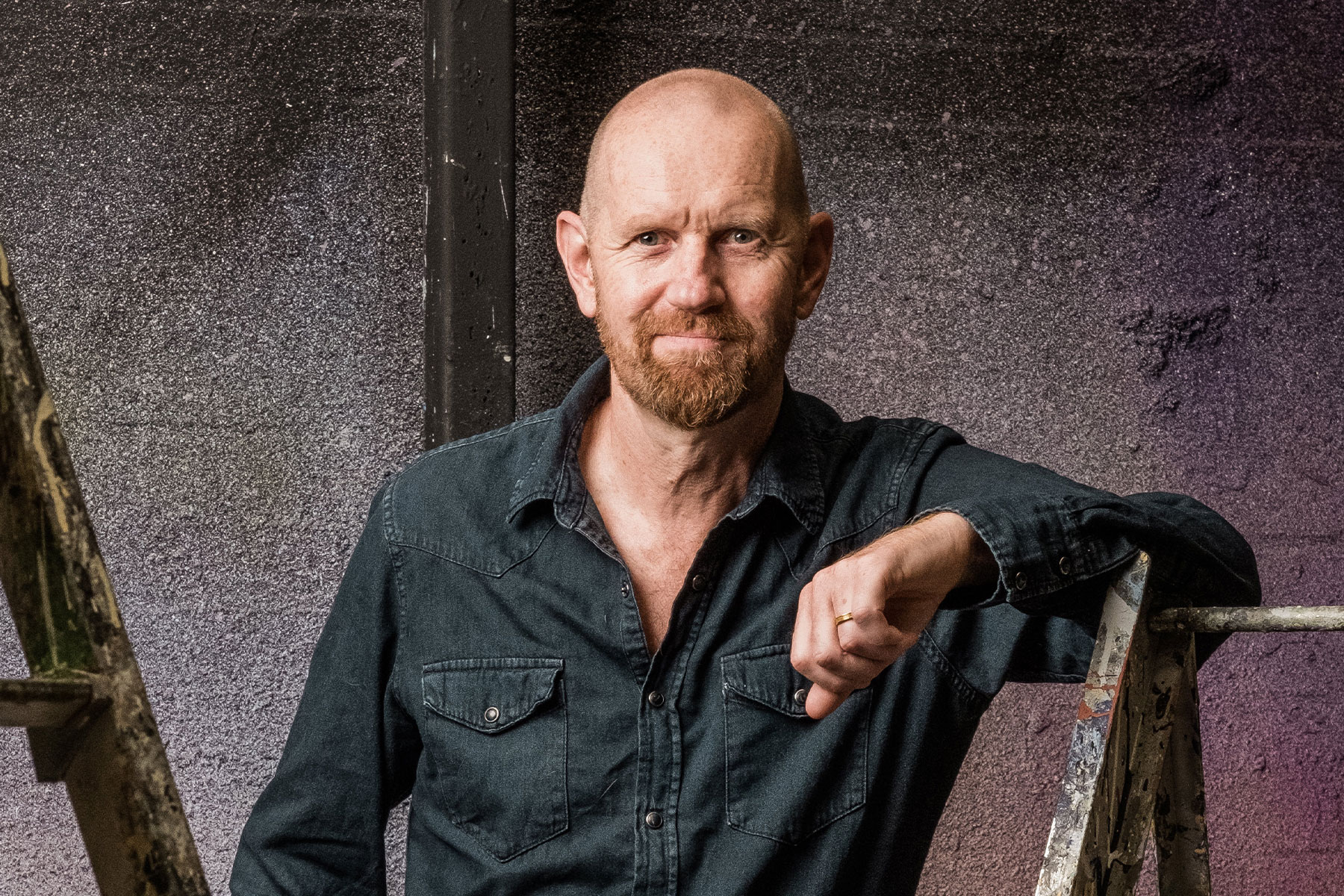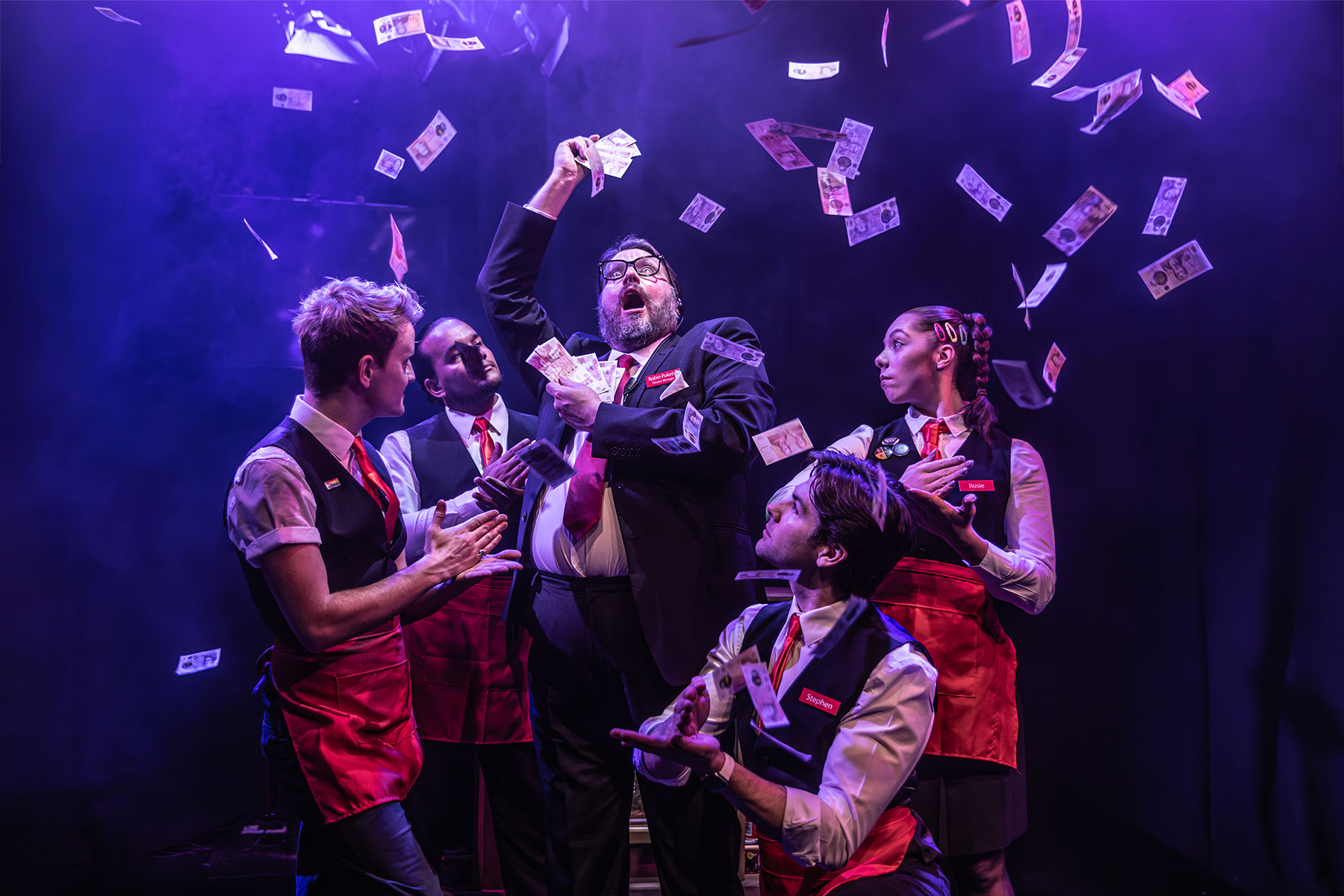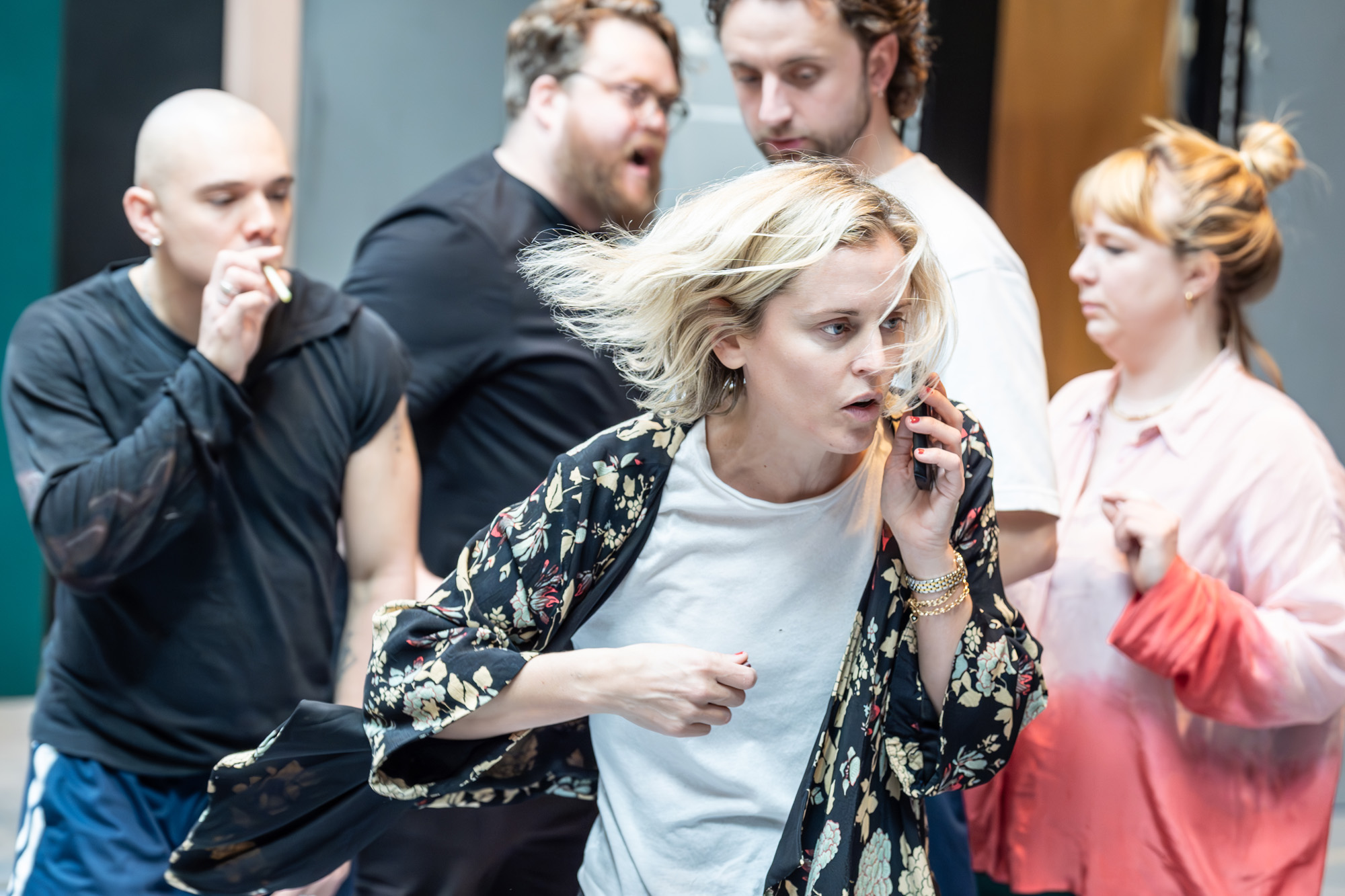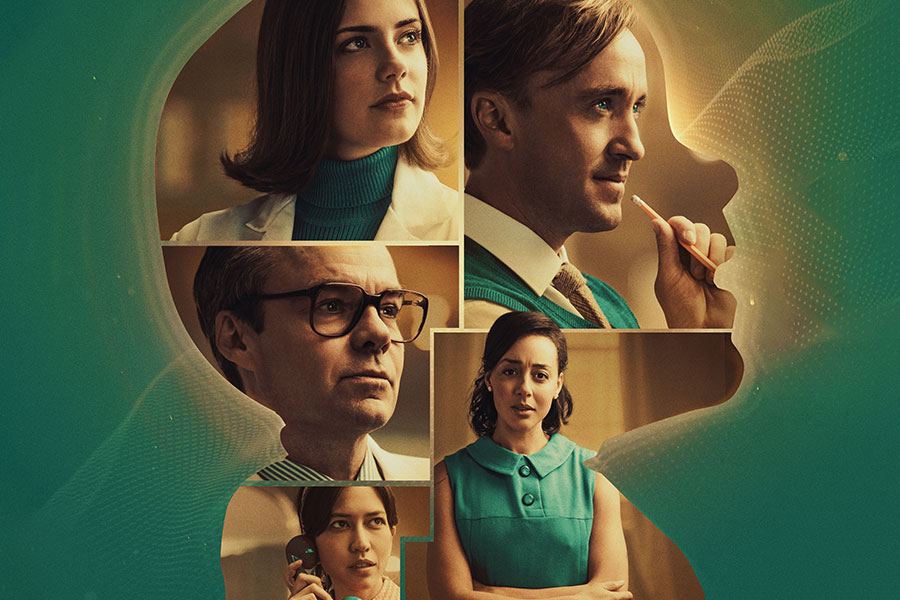The Barber of Seville
Armonica’s consort, under its musical director Christopher Monks, is on one side of the stage; there are only 19 players with the director providing the harpsichord continuo. Their rendition of the overture set the mood – an intelligent chortle. There’s no chorus, so we go straight from the Count’s first serenade (during which he passed the red roses originally intended for Rosina to lucky occupants of the front rows and boxes) to Figaro’s entrance, which is through the audience.
You get the general idea. And there more of the same to come.
After this initial scene of Act One, the rest of the action takes place in Dr Bartolo’s house. Except that this is the interior of a giant cream guitar case, red-velvet lined and with minimal furnishings. Figaro himself is armed with a human-sized version of the case; Don Basilio and the pretend Don Alonso have midget versions. Designer David Craig keeps the costuming within the 18th century convention, though he’s topped Rosina (that well-to-do young bourgeoise) with a wig which would not have been out of place in Marie Antoinette’s circle at Versailles.
Musically as well as dramatically it’s very strong. Doreen Curran manages Rosina’s mezzo-soprano coloratura with ease and has an unforced perkiness in her exchanges with Martin Higgins‘s bumble of a Bartolo. Gareth Morris is Almaviva; he’s not the most subtle of tenors but one who is blessed with acting ability and a neat sense of humour. As Basilio Mark Beesley insinuates himself around all the highs and lows (plenty of those) of the role.
Catherine Hegarty makes Berta into a character in her own right (no touch of Mozart’s Marcellina here); you can visualise her in the forefront of the women’s march to Versailles demanding bread or even knitting while the guillotine’s blade drops. Jonathan McGovern trebles Fiorello, the single representative of the police and the lawyer in the final scene.
If Basilio is one of those singer-proof parts, so is the title character. Owen Gilhooly is a bustling Figaro with crisp enunciation (the translation is by Amanda and Anthony Holden) and a baritone which carries well both in ensemble and in the entrance “Largo al factotum” aria. These are all mainly young voices, unfazed by cadenzas, crescendi and the need to decorate repeats and perfectly capable of acting free-fall knockabout and singing at the same time.
Up to now, I had always thought that this was the wrong opera with which to introduce young people to the genre (Carmen would have been my first suggestion. But Armonica’s The Barber of Seville would work in this context splendidly. It would be fascinating to see what the same team would make of La Cenerentola.
Reviewed at Theatre Royal, Bury St Edmunds
– Anne Morley-Priestman










